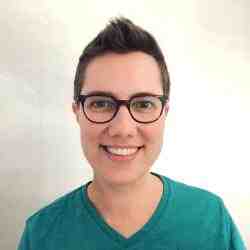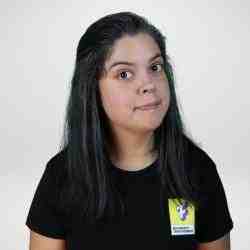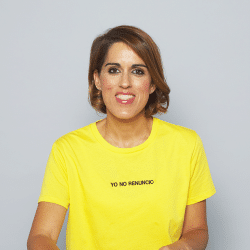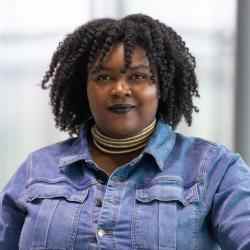Introduction
Melissa Malzkuhn is the Founder of Motion Light Lab, which uses technology and storytelling tools to create sign language learning and literacy materials for Deaf children. Melissa’s work is also creating a space for Deaf culture to be sustained, supported, and empowered.
The New Idea
Melissa Malzkuhn is the founder of Motion Light Lab, an interdisciplinary lab that uses emerging technology and storytelling to create sign language learning and literacy materials for young D/deaf1 children. Through digital storybooks and cutting-edge motion capture technology, Melissa is helping deaf children and their families learn sign in order to close the enormous literacy gap that many deaf children face, while also creating a space for Deaf culture to be sustained, supported, and empowered. In doing so she challenges the assumption of hearing communities that ASL and other sign languages are not valid languages with their own rich history and culture. Motion Light Lab also trains, employs and empowers Deaf adults, who are often marginalized and given no or limited access to employment.
Melissa’s innovation, however, goes beyond the technology tools she and her team are developing. She is designing and using this technology to build bridges between the Deaf and hearing communities and encourage the parents, doctors, and teachers who often make decisions for young D/deaf children to embrace sign language and the Deaf community. D/deaf children have an opportunity to grow up bicultural in the Deaf community as well as their family’s native culture, supported by Deaf mentors and connected to Deaf peers, an environment that’s rich, welcoming, and fully accessible for them. Melissa works to help more families and young people seize that opportunity.
Melissa and her team are now working with 11 countries to help them develop their own literacy and storytelling materials in their own native sign languages. All of this work comes together in Melissa’s larger vision—one where Deaf language, education, and culture is elevated, celebrated, and accessible by Deaf and hearing communities alike, and one where all young D/deaf children have the opportunity not just to learn to read and sign, but to join a thriving, creative culture that is ready to welcome them exactly as they are.
The Problem
Worldwide, only 2% of D/deaf children receive bilingual education, meaning that a child receives both sign language access as well as education in the local spoken language. 95% of D/deaf children are born to hearing families, who often do not have the time, opportunity, or resources to learn to communicate in sign language with their children and are sometimes told by hearing doctors that teaching sign language will impair their child’s ability to learn speech, a position not supported by research on neuroplasticity. D/deaf children who do not receive early access to sign language, however, and whose access to spoken language is limited by their hearing loss, are often language deprived as young children. Language deprivation in formative early years results in learning delays, particularly reading delays, which can persist throughout a student’s life and limit opportunities in adulthood.
The benefits of sign language for young deaf children, and the dangers of language deprivation, have been proven and are common knowledge in the Deaf community, which has been advocating for bilingual education for 200 years. But decisions for deaf children are often made by their hearing parents, doctors, and teachers without a Deaf advocate or mentor in the room. Many parents of deaf children are not familiar at all with Deaf culture and do not know that there is a thriving world out there ready to welcome their children. Rather, they are daunted by the prospect of learning a new language, with little resources available, particularly if they have financial or time constraints.
Sign languages are as rich a means of communication as any other language. The Deaf community is rich with stories and storytellers, poems, and puns - all the things one would expect from any language and culture - but sign languages are often undervalued and underestimated by the hearing communities around them. Demonstrating the storytelling value of sign language and recording this storytelling using digital media tools that hearing storytellers have long had access to will have benefits beyond the crucial impact of helping young people learn to read and connect with language. It will also make new digital platforms available to Deaf storytellers who want to make art in their own language, as well as give the young deaf people who work on the platforms marketable skills that can help bridge the employment gap between Deaf and hearing people.
The Strategy
Melissa’s strategy is guided by two overarching and interrelated goals: (1) guaranteeing early access to sign language and reading for D / deaf young people, including those born to hearing families and (2) empowering Deaf people domestically and globally to continue claiming and showcasing sign language as a source of culture, knowledge, and opportunity.
Motion Light Lab is an educational nonprofit that serves as a hub for Melissa’s groundbreaking work. The Lab creates new tools for expanding literacy and language access, building tech tools as well as community partnerships. The Lab creates new app and motion capture tools and also fosters relationships between Deaf creatives and creators. The Lab is a center for learning, both for the young people learning from storybook apps and for the Deaf students embracing digital and creative tools to share their community and culture.
Melissa’s work is centered around developing a growing suite of creative storybooks and digital resources that increase literacy and make it easier for parents, teachers, and others to embrace sign language and accompany D/deaf young people along their educational journeys. Motion Light Lab’s storybook apps combine literacy tools with an opportunity for children and families reading at home with them to learn more sign language. The motion-capture technology they are developing enables signing cartoon characters, another way to engage D/deaf youth and their families in early education. Melissa envisions a world with television shows for children that teach them ASL and reading, much as hearing children can learn reading skills via media now.
Yet, this technology also aims to reach a broader systemic goal: to create a world where hearing families wanting to learn sign have abundant resources and all young D/deaf children have exposure to Deaf role models, mentors, and plentiful Deaf representation. Tools and resources for Deaf children that are the same quality as and similarly accessible to the digital learning tools available to hearing children, like educational cartoons and storybook apps, will help parents see deafness not as a deficit but rather a passport to a rich new culture that is ready to welcome their children. Parents want to communicate with their children, to help them succeed in school, and to give them access to the kind of vibrant, magical storytelling that children love and that these apps provide.
Melissa’s organization spreads their storybook apps through a network of parents and teachers, relying in part on word of mouth, as well as partnerships with CSOs like Communication Services for the Deaf, the largest nonprofit in the United States that is serving and run by Deaf people. In doing so, Melissa and Motion Light Labs are helping to demystify sign language and are making educational resources more accessible to families. By building bridges that connect the hearing world to the Deaf community, Melissa is embracing children who would otherwise grow up with starkly limited language access and far worse educational outcomes, as well as creating new ways for Deaf creatives to make art and document their culture.
Though Motion Light Lab’s work is targeted towards younger Deaf individuals, the organization is also giving Deaf adults new opportunities. Currently, 70% of D/deaf adults are unemployed in the United States. Melissa and her team are working to help curb this, by hiring Deaf adults to work with the organization, and connecting them to opportunities in the arts and technology fields. Motion Light Lab’s digital approach to documenting Deaf culture also has profound impacts for Deaf creatives and storytellers who have not had access to tools like this for making and sharing art in sign language.
Since 2013 when their first storybook app, The Baobab, came out - at the time the only bilingual English/ASL digital storybook for children - Motion Light Lab has released more than 30 additional storybook apps as well as a platform for Deaf creators to make their own apps and a training program at Deaf colleges and high schools to support Deaf artists in using the app.
However, the work doesn't stop in the United States. Motion Light Lab is replicating and scaling around the world. They have given Deaf people around the globe new ways to record and share their creative output in sign languages beyond ASL. To scale globally, Motion Light Lab has partnered with respected leaders in local Deaf communities, sharing their creative tools and using them to tell culturally relevant stories for the countries and communities where they operate. They have replicated in nine countries including Thailand and Turkey. They’re also working on a program called SignShare, which will ultimately create a library of digital resources that use avatar characters to sign and tell stories to young people and their parents. This project is undertaken in collaboration with their Deaf partners in Argentina, New Zealand, and the Netherlands. These digital tools are a means of documenting and expressing the thriving cultures that have sprung up around different sign languages in different Deaf communities across the globe.
Motion Light Lab is providing a crucial resource that will help improve the literacy rates of deaf children. But Melissa’s work is also demonstrating the value of sign language and showcases the beauty of ASL storytelling, allowing D/deaf and hearing communities to embrace Deaf culture more broadly. Her work is validating sign language as a vehicle for creativity, knowledge, and pedagogy in the same way that spoken languages have been for centuries. In this way, Melissa is creating a cultural shift that will have lasting positive impact for the relationship between Deaf and hearing communities, in large part by re-framing deafness in an asset-based way with its own unique beauty, as opposed to a pale imitation of hearing culture.
Motion Light Lab has an eight-person team and works with numerous international partner organizations run and spearheaded by Deaf people. They are embedded on campus and work in close partnership with Gallaudet University in Washington DC, the country’s premier Deaf university.
In the past three years, Melissa has put out more than ten new storybook apps and expanded to two additional countries. Her apps have been downloaded an additional 20,000 times in the past three years, for a total of 70,000 downloads. Her apps have exposed children to concepts like grammar and idioms, but also to cultural concepts like Black pride, a crucial intersectional issue for young Black, Deaf children. The technology allowing for signing cartoon characters has grown dramatically and the first sign language television cartoon is set to launch in 2024. She has participated in Ashoka’s Globalizer program and connected with numerous thought partners through that program, as well as developing a strategy for more deliberately engaging hearing parents to support Deaf people in getting into decision-making rooms to advocate for the unique needs of the Deaf community. For example, the law and best practices for children with disabilities now encourages keeping youth in integrated, mainstream classrooms, but it is crucial to balance that need with providing adequate support in learning sign language, having sign language interpretation in the classroom, and exposure to Deaf mentors and Deaf culture. She has received a $1 million dollar grant from LEGO for her creativity and commitment to children’s learning.
The Person
Melissa is third-generation Deaf and grew up in a thriving Deaf community in the Bay Area. Her grandfather was a Signmaster, an honorable position in the Deaf community, because of his talent in ASL poetry, translations, and literature. In 1943, before sign language was recognized by the hearing world as a “real” language, he developed a signed translation of the poem Jabberwocky by Lewis Carroll and shared it with a Deaf actor, who toured the United States with it, demonstrating the very real power of ASL as a language for literature and culture as well as communication.
In college, Melissa had the opportunity to work with the World Federation for the Deaf, (WFD) - an international human rights organization established by and for Deaf people. Melissa considers this moment “the start of the rest of her life.” Although Melissa was an intern, she was quickly roped into the global organization’s two-person team and witnessed WFD’s broad impact despite their size. Her experience with the organization introduced her to life in the CSO sector and human rights work. Over the years, Melissa continued her relationship with WFD and continued to help them build their conventions, develop policy, as well as programming for young Deaf people all over the world.
In 2008, Melissa was part of the team that worked on a Gallaudet academic journal that was the first digital journal of its kind. The journal allowed people to record their academic and professional content in ASL, creating more access to knowledge and information for Deaf communities. By leveraging digital literacy and encouraging the use of ASL in an academic context, Melissa and the team’s work re-shaped the way that people perceive the use of ASL as a language, which has historically been devalued and de-legitimized. The skills that Melissa learned at WFD and through the construction of the ASL Journal would eventually inform her work at the Motion Light Lab.
Later, Melissa pursued her MFA in Visual Narrative at the School For Visual Arts, where she was the only Deaf person in her cohort. Inspired by Melissa’s experiences in graduate school, Melissa and her siblings created The ASL App, and Ink and Salt, through which they have created other apps for sign language and communication. They have also worked with Quebecois sign language users and Icelandic sign language users to create their own apps in their own languages and aim to reach more countries going forward.
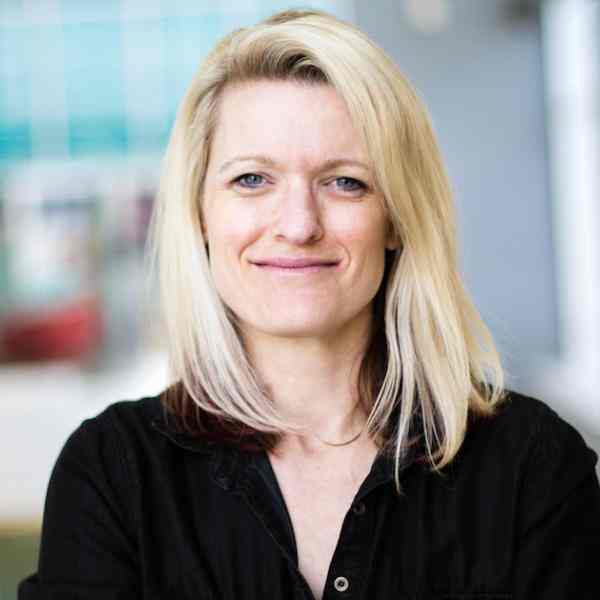
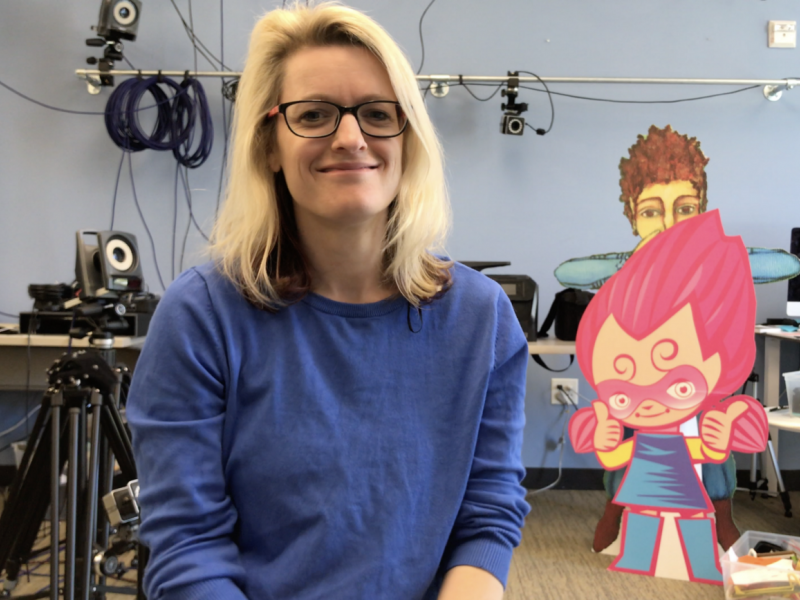 Tile image
Tile image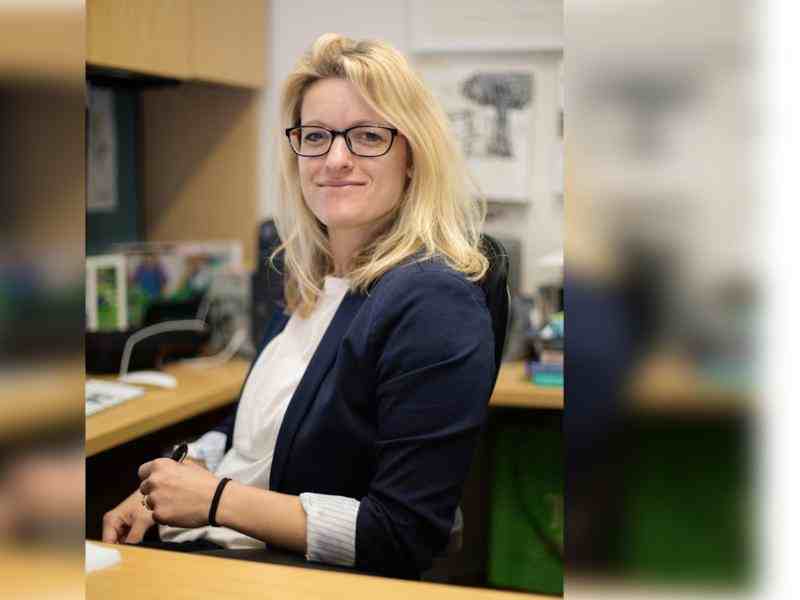 Tile image
Tile image